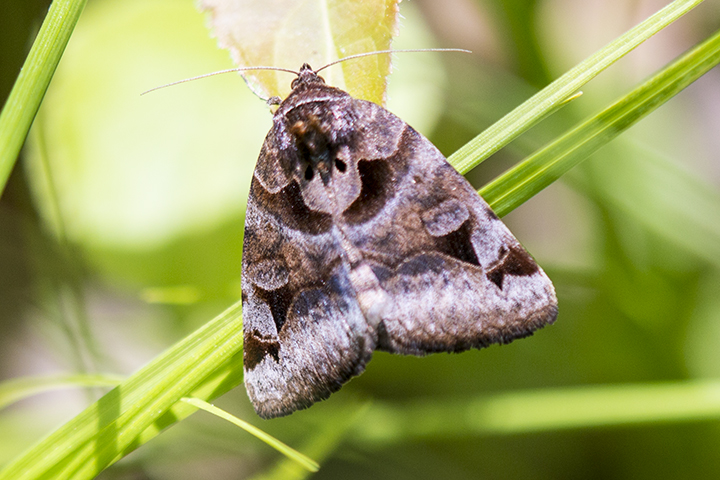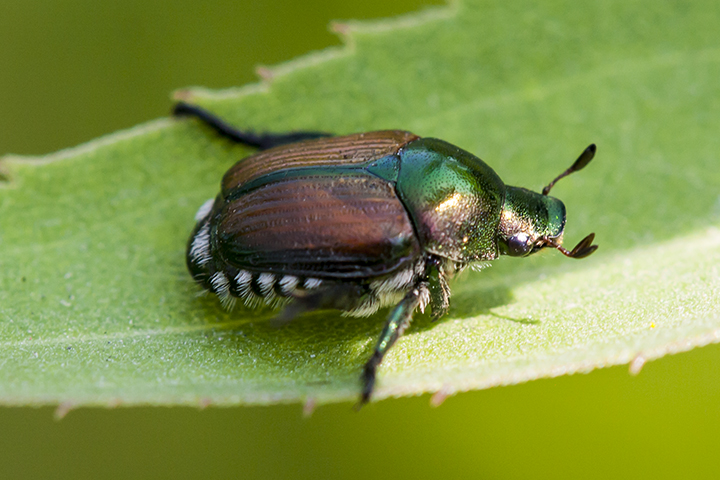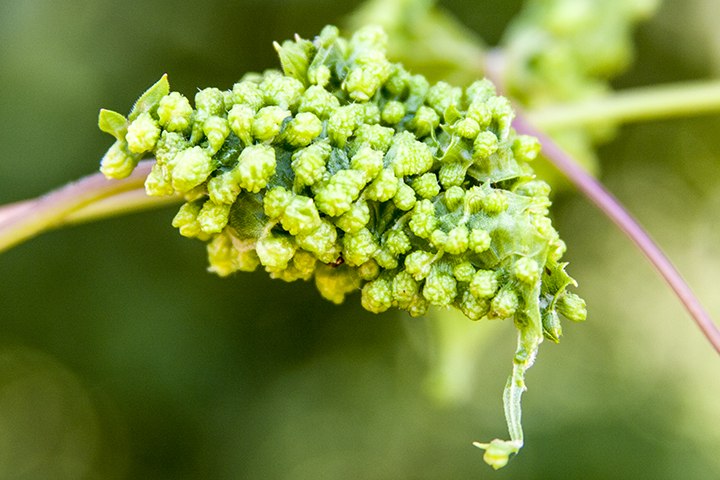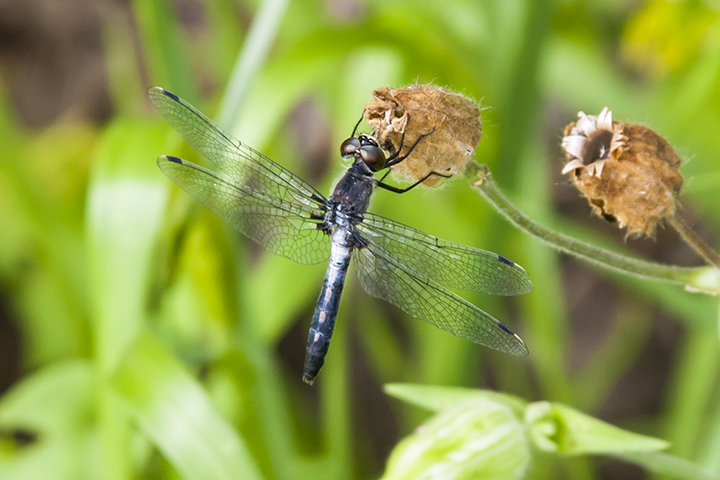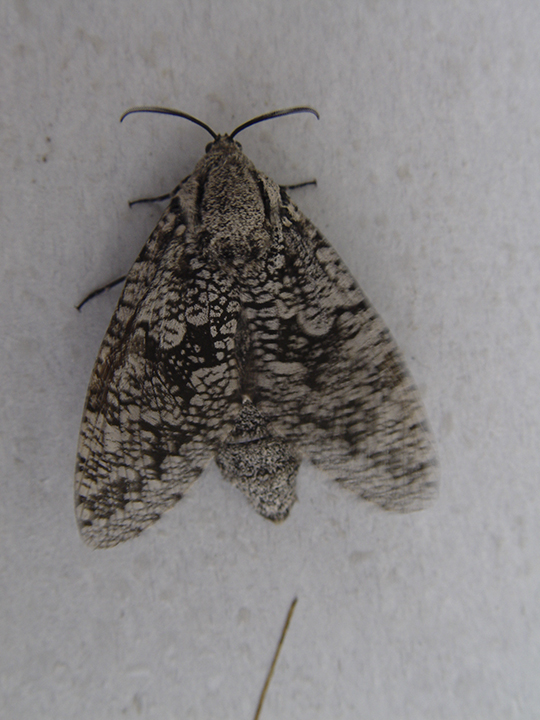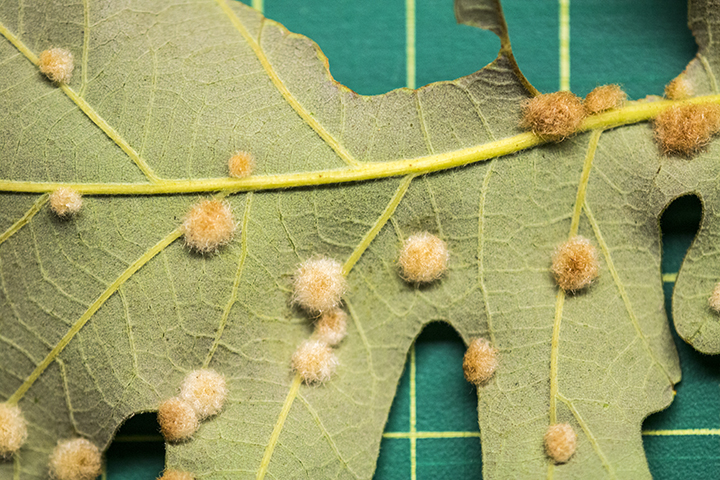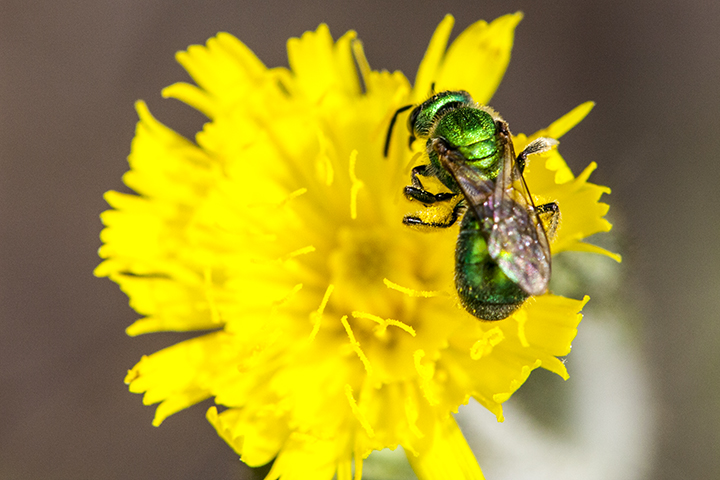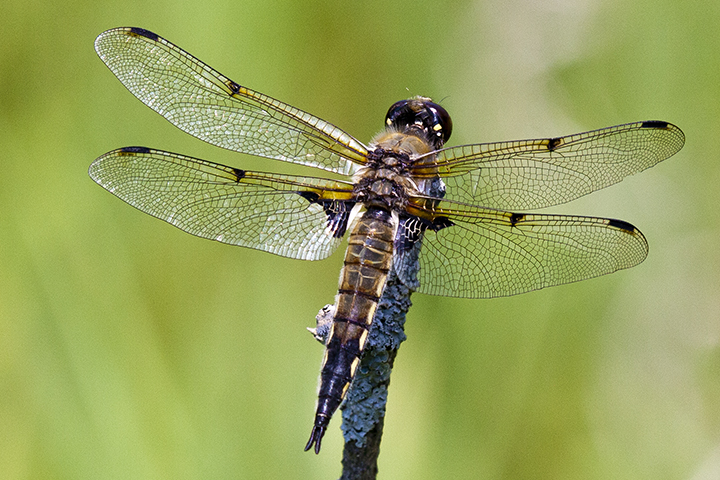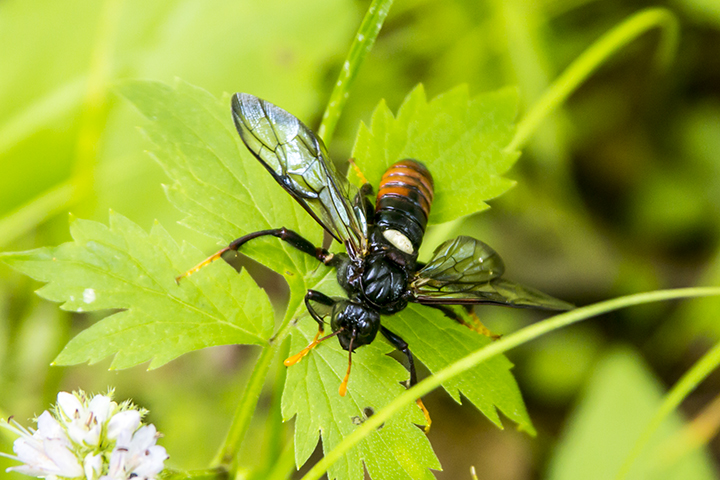Toothed somberwing (Euclidia cuspidea) is common and widespread across North America from the east coast to the Rocky Mountains. In Minnesota, it is found from mid-May to early July in meadows and in woodland edges and openings with long grass.
It is active both day and night. When flushed from vegetation it flies rapidly for about 20 yards then drops to the ground. It rests with the wings held flat and the hindwings usually concealed. It is attracted to light.
This is a stout, medium-sized moth. The adult is about ⅞″ long and has a wingspan of 1⅛″ to 17 ⁄16″. It is distinguished from similar moths by dark brown triangular spots on the forewing of the adult, and by the presence of reduced leg-like structures on the fourth abdominal segment of the caterpillar.

